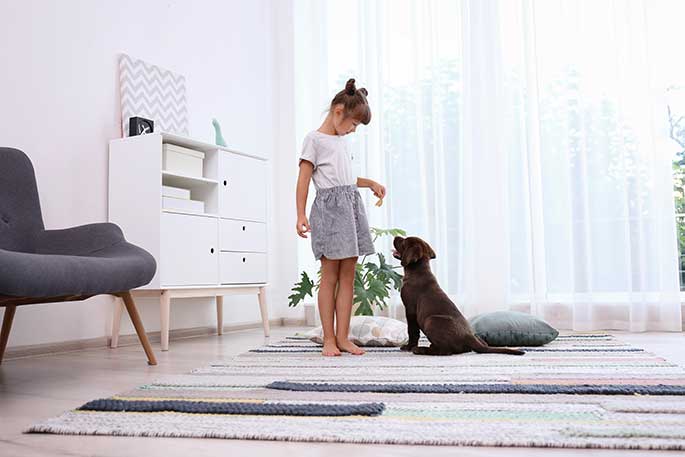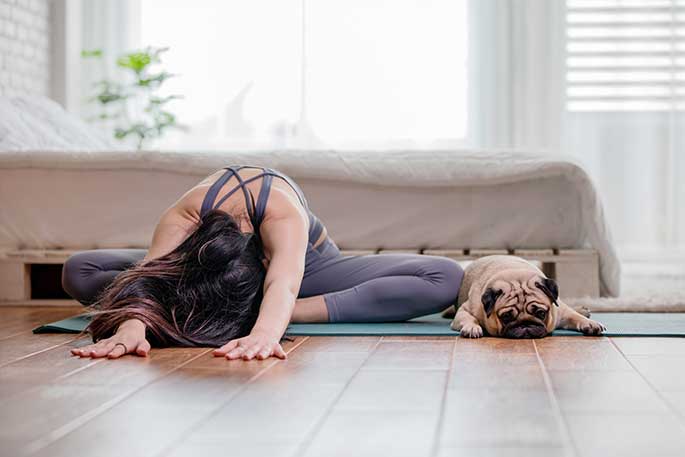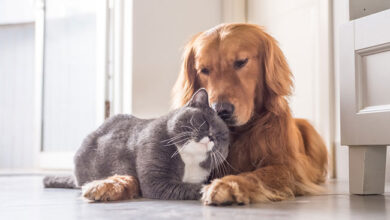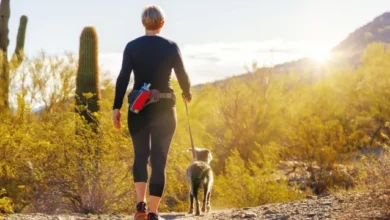
As a new dog parent, life can seem tough. Your puppy will likely not be house trained and will tend to ‘go’ wherever they want. They may also chew on the furniture and upholstery, destroying stuff around your home and turning it into a complete mess.
If you don’t have any skills in dog training, don’t worry as you can always find a good and reliable dog trainer. If you’d rather take on this task yourself, you’ll need to arm yourself with trusted resources so you can make all the right decisions and ensure your life with your new family member is nothing but a fun adventure.
Read More:
- 10 Simple Things You Can Do To Keep Your Dog Happy and Healthy For Life
- The Pros and Cons of Using a Pet to Teach Your Child Responsibility
- The Most Important Puppy Training Commands
- How to Leash Train Your Puppy
- Some Great Tips to Stop Your Dog from Chewing Furniture
- 6 Things To Do Before Bringing Your New Dog Home
Here’s everything you need to know about being a first-time dog parent:
1. General Training Tips
Start by having a crate in your home before bringing in your pup. This will help you contain the little bundle of energy whenever you’re away from the house. When training your puppy, view them as a baby who doesn’t have any concept or grasp of right or wrong. When correcting and training them, be assertive but calm.
Note that repetition is key to training your dog. Be consistent and patient with them, and they’ll start learning what’s right and what’s wrong in no time. Furthermore, try enrolling your pup in obedience classes. This will help ensure your pup is under control at all times, and, in case of an unexpected situation, you’ll regain control quickly.
Note that the type of breed also matters when looking for a canine companion. If you are searching for a working dog, then you may need to go with easily trainable dogs such as the border collie or German shepherd. On the other hand, you may prefer a more independent breed if you spend less time at home. Take a look at some breeds at mybestbark.com
Instead of just saying no to your pup, try offering a distraction. This distraction should be something that you want them to do. This will help keep their mind engaged and will help the pup understand not just what not to do but also what to do.
Some of the important basic commands include:
- With Me
This command is useful when you’re walking the dog. It’s meant to ask the dog not to pull on the leash. This creates a more relaxed pace with your pup walking right beside you. Note, however, that you don’t have to use the exact words “with me”. You can also use your preferred words provided that it’s simple for your dog to understand. An example would be “easy”.
- Look
The “look” or “watch me” command teaches your pup to focus their attention on you. It comes in handy when out with your pup, and they see something interesting and want to chase.
By teaching them the look command, you can take their attention away from distractions and prevent accidents or unnecessary excitement. This command helps you maintain control of your dog.
- Come Command
This simple command is meant to call in your dog, regardless of the situation. It can prove highly beneficial when trying to put your dog on a leash or when you just want some cuddle time.
If you’re at the dog park and it’s time to go home, the come command will help you call back your pup. It can be quite the challenge trying to get back a dog who is off leash and acting rowdy. This command can help spare you a lot of frustration.
- Emergency Recall Training
The importance of this type of training is that it ensures your dog will come running, no matter the situation, whenever you need to call them in or if you need to take them out of a situation.
Imagine a scene where your dog would run into a moving car while busy chasing something. This command can very easily save its life. This command isn’t the same as the simply come command and is meant for emergency situations.
2. Training for Unwanted Behavior
If you notice your pup is chewing on stuff around the house, try using a bitter apple spray. This should get them to stop. For pups who love to chew on shoes, you can buy textured toys and encourage them to chew on these rather than chewing the shoes.
If your pup is barking at anyone and everything that they see, this is likely because they feel uncomfortable with them in the area. Try and comfort them and assure them that it’s okay, and they should gradually learn to stop barking.
3. Training Your Pup to use a Lead
Train your pup to use a lead to ensure they’re not always pulling you. This will ensure a comfortable walk with them. It’s important to get the right lead for your puppy. Find one that isn’t retractable as such leads often snap and actually encourage the puppy to pull. Also, choose a lead that comes with a harness that connects to the front of the chest of your pup. This also prevents the dog from pulling.
When you begin training your pup to walk with a leash, you’ll need to first get them accustomed to it. Put the leash on your pup while still inside the house or when playing with them. This teaches them that a leash is not such a bad thing.
4. Socialize Your Pup
One of the main reasons why it’s important to socialize your pup is that you allow them to be affectionate and interact positively with other dogs and people. To socialize your puppy, allow them to meet as many dogs and people as possible. Take them to the dog park and let them play with other puppies and dogs.
Taking your pup on a walk also allows them to get familiar with different objects, shapes, and structures. This allows them to relax and not be on edge every time you take them out. If, during socializing, your pup shows any type of aggressive or antisocial behavior, be quick to correct them. This will discourage the behavior and help the pup become more sociable and reduce the chance of fights erupting.
5. Potty Training Your Pup
Young pups will tend to go anywhere. To encourage good behavior, always carry your pup to the grass whenever they want to go and place them at an ideal spot. This shows them where you’d like them to be whenever they feel like relieving themselves. Additionally, use positive reinforcement. Whenever they use the potty, give them encouraging rubs and a treat. On the other hand, if they go to the wrong place, discourage them. By being patient, your pup will soon learn where to go and where not to go.
Make sure that you don’t scold or become overly harsh with your pup. If they go inside the house, chances are they do not have enough chances to go outside. Give your pup plenty of time to go outside. Whenever they go outside, give them positive reinforcement. This teaches them that going outside is a good thing.
It’s important that the puppy learns to do their business, whether they’re on a lead or not. You’ll often see dogs that won’t “go” while on a lead since they’re not trained to do so. Teach your pup that it’s okay to do at a young age.
6. Exercise Training

Ensure that your pup has enough time to relax. Don’t over-exercise them and instead give them plenty of time to relax and take naps. Just like any baby, naps are an important part of their development. Remember, exercise is also important as long as you don’t overdo it. It stimulates the muscles to grow. It’s also a way to stimulate your pup’s mind as they take in all the sights and sounds during a walk.
Young dogs will eventually enter their teething stage. To help make it easier for them to lose their milk teeth, fill a toy with peanut butter and sweet-smelling food, and then put it in the freezer when they’re chewing and biting on it, the teeth with easily come out when it’s time.
When spending quality time with your pup, make them accustomed to being touched in the feet, body, face as well as the mouth. This makes it easier for the vet to handle them. Also, it’s a good idea to drive your pup around early on. This gets them accustomed to the experience. They are less likely to have anxiety whenever they’re in the car. Plus, it makes it easier for you to drive them to the vet.
Note that when training your dog, short 5-minute intervals work best. You can teach them to sit, stay, lie down as well as any simple trick by making the training short and fun. Reward your pup whenever they do something right and withhold the treats when they don’t do it right.
Final Thoughts
The above training tips will help you keep control of your pup if you’re a new dog parent. Use positive reinforcement for your dog and avoid harsh scolding. With treats as rewards for good behavior, you can teach your dog to co-exist alongside humans, other dogs, and animals. Remember, it’s important to socialize your dog as early as possible to teach them how to interact with others.



